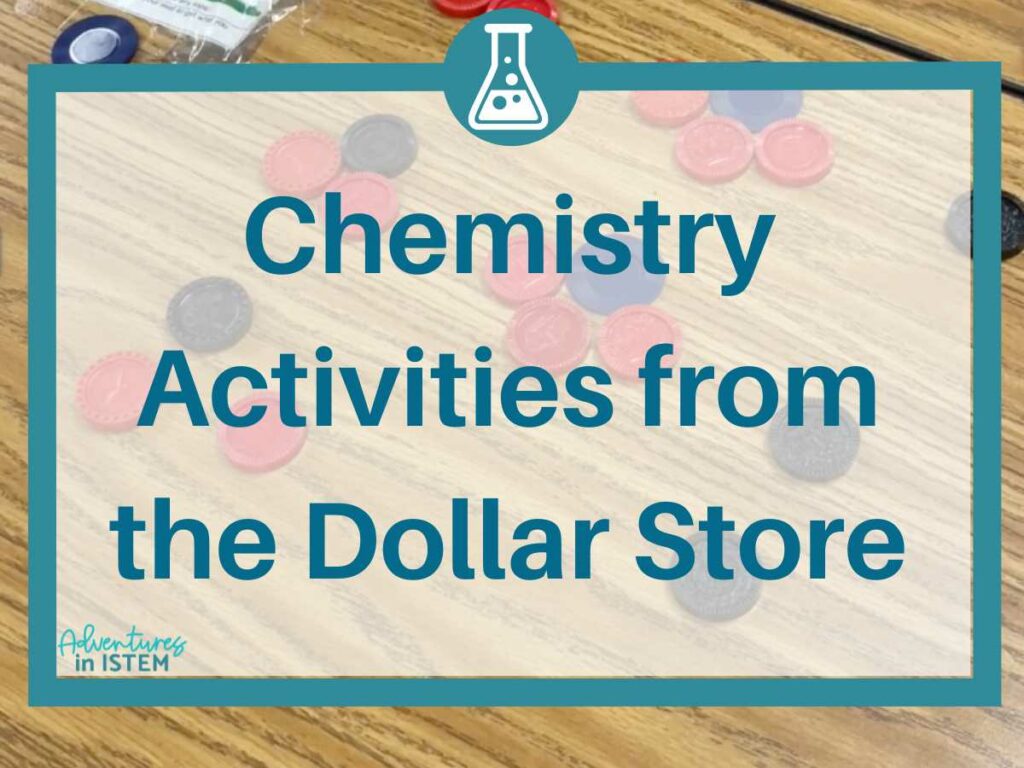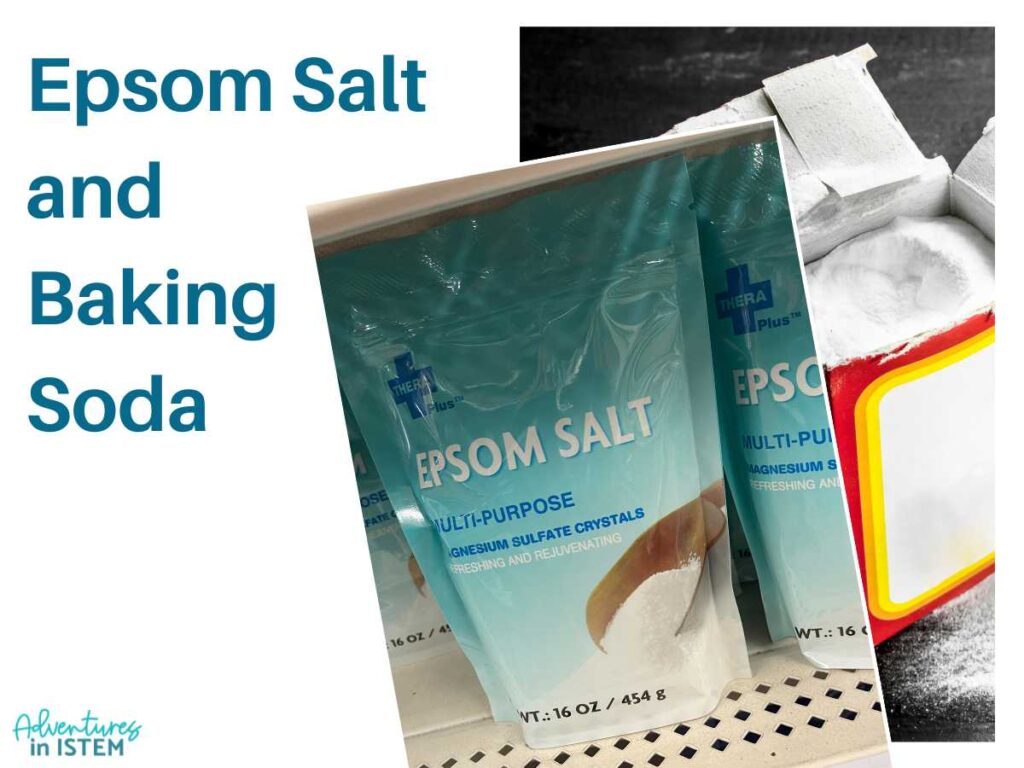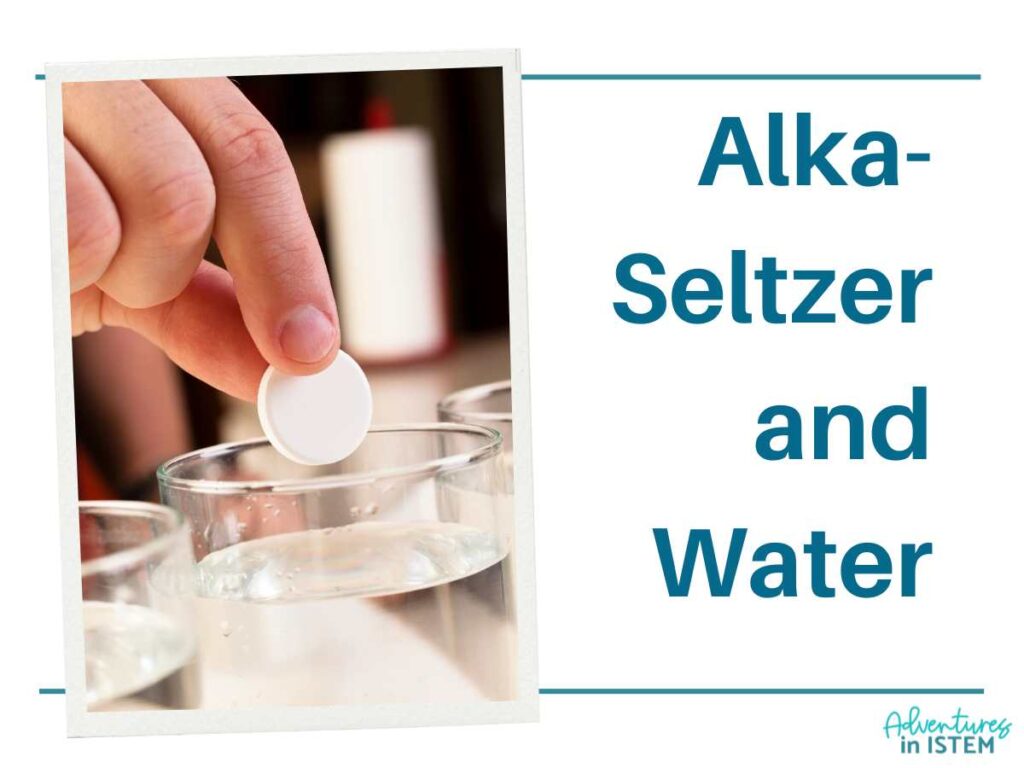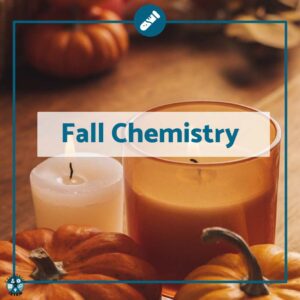Have you ever considered the potential of dollar store items for teaching engaging simple chemistry activities? These affordable and accessible materials can transform an ordinary classroom into a dynamic science lab. Here’s a guide to simple chemistry experiments you can easily set up, providing students with hands-on learning experiences demonstrating real-world chemical reactions using everyday items.
Simple Chemistry Activity 1: Baking Powder and Vinegar- Basic chemical reactions
Visit the baking aisle of your local dollar store to find baking powder and vinegar. This experiment is an exciting twist on the classic baking soda and vinegar reaction.
Start with 1 tablespoon of baking powder and add 1/4 cup of vinegar. Baking powder contains sodium bicarbonate, which reacts with the acetic acid in vinegar to produce a bubbly display of carbon dioxide. This reaction, shown by the equation NaHCO3(aq) + HC2H3O2(aq) → CO2(g) + H2O(l) + NaC2H3O2(aq), is perfect for discussing the concepts of chemical reactions and gas production. Guide your students through the process and have them observe the fizzing and bubbling—it’s chemistry in action!
Simple Chemistry Activity 2: Milk and Vinegar- Making Plastic
To get started, pick up some milk and vinegar from the grocery section of your dollar store.
Heat about 1/4 cup of milk (just warm, not boiling), and then add 1 tablespoon of vinegar. The acid in the vinegar causes the milk to curdle, separating out the casein, a protein that can form a natural plastic. Have students stir the mixture for about a minute, then strain out the solids. These can be molded into shapes and left to dry, turning into a hard plastic. This experiment is a great way to discuss organic chemistry and sustainable materials.
Simple Chemistry Activity 3: Lemon Juice and Baking Soda- Citrusy Chemical Reactions
Head to your nearest dollar store and grab some lemon juice and baking soda. If they do not have lemon juice you could use another type of citric acid like orange juice.
Mix 1/2 tablespoon of lemon juice with 1/2 tablespoon of baking soda. This reaction, which produces carbon dioxide gas and sodium citrate, offers a sensory-rich experience with its pleasant lemon scent. It’s a great way for students to compare acid-base reactions and explore how different acids react with the same base.
Simple Chemistry Activity 4: Epsom Salt and Baking Soda- Simple Precipitates
Find Epsom salt and baking soda in the personal care or household section of your dollar store. When these two compounds mix, there may not be a dramatic reaction, but it’s an excellent opportunity to discuss the nature of chemical changes and the factors that influence reaction rates.
Guide your students through mixing these compounds and observing any subtle changes, fostering a discussion on expectations versus reality in chemical reactions. You will want to use two parts of epsom salt to one part baking soda. Make sure each one is diluted in 1/8 cup of water first. Once they are mixed there should be a simple white precipitate that forms.
Simple Chemistry Activity 5: Alka-Seltzer and Water- Effervescent Reactions
Alka-Seltzer can typically be found in the health and medicine aisle of your dollar store. This is a fun, bubbly, experiment.
Drop an Alka-Seltzer tablet into a glass of water and watch as it dissolves, releasing carbon dioxide gas and creating a fizzy reaction. It’s a straightforward yet effective demonstration of chemical dissolution and gas production, suitable for discussing the states of matter and chemical kinetics.
Simple Chemistry Activity 6: Conservation of Matter with Colored Beads
Colored beads are readily available in the crafts section of your dollar store. Use these beads to illustrate the conservation of matter principle.
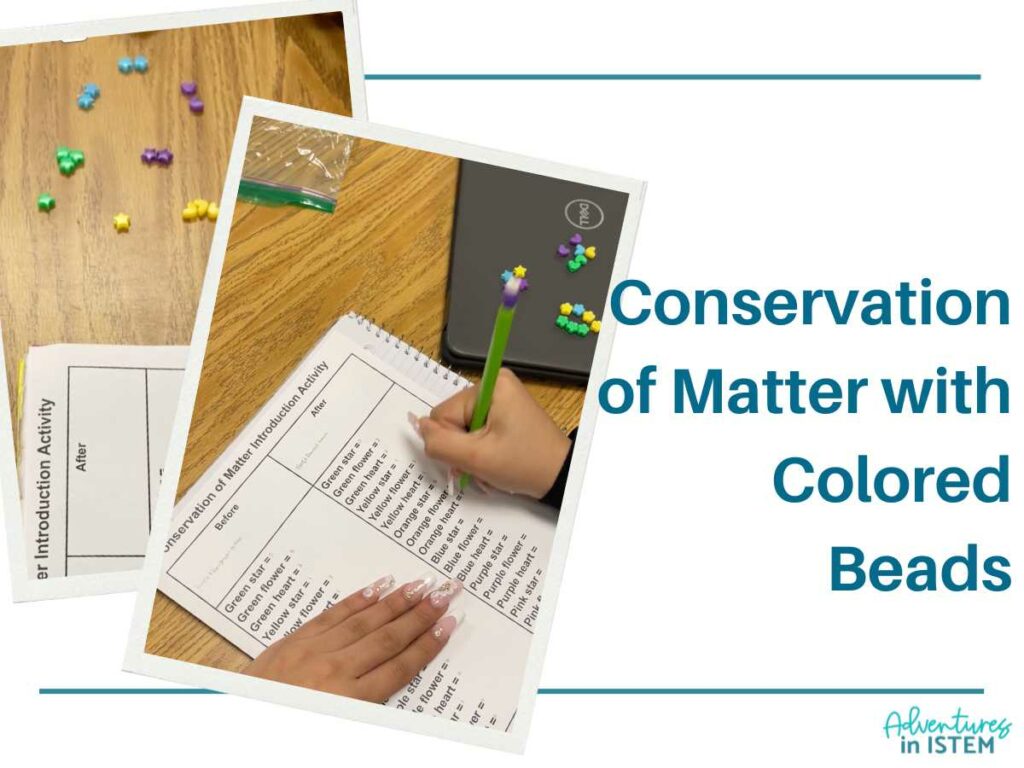
Have students sort and categorize the beads by color and shape, mimicking the sorting of atoms and molecules in a reaction. This hands-on activity not only reinforces the concept that matter is neither created nor destroyed in chemical reactions but also adds a visual and tactile element to the lesson.
Simple Chemistry Activity 7: Balancing Equations with Poker Chips
Look for poker chips in the toys or games section of your dollar store. Use these chips to make abstract chemical equations more tangible by assigning different colors to represent various elements.
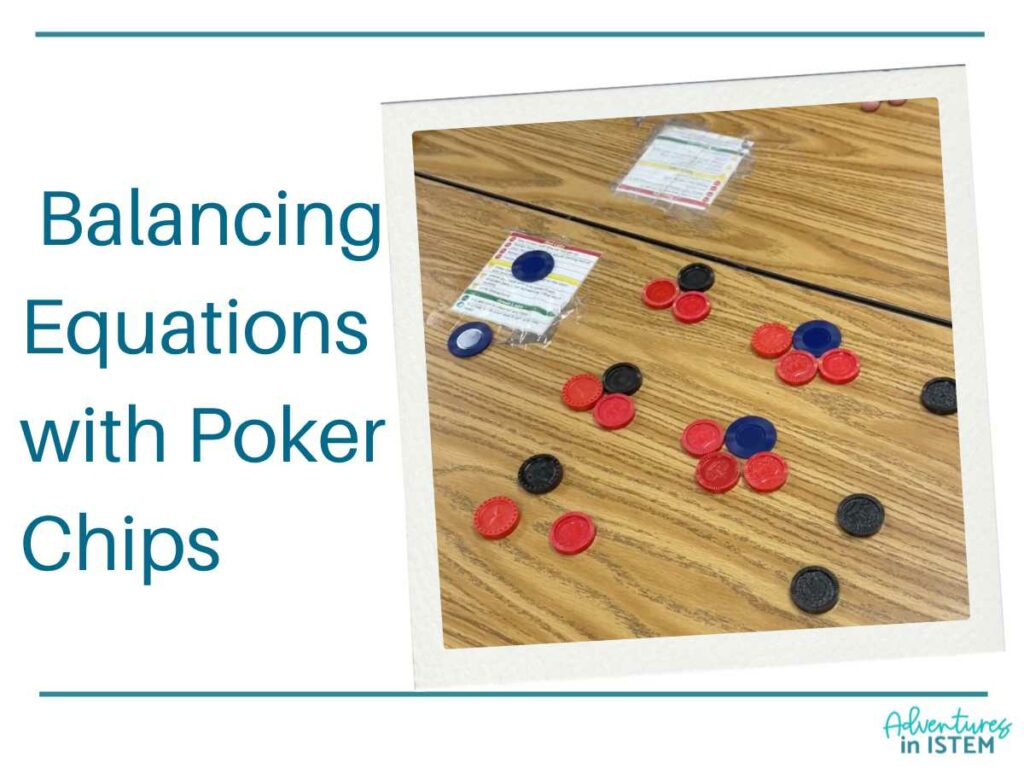
Choose chemical reactions that deal with three elements at the most. For example, hydrogen and oxygen making water, sodium and chlorine making sodium chloride, or carbon and oxygen making carbon dioxide. This method helps students understand subscripts and coefficients in a concrete way, enhancing their grasp of balancing equations and stoichiometry.
Simple Chemistry Activity 8: Glow Sticks- Demonstrating Chemiluminescence
Glow sticks can be found in the party supplies or seasonal section of your dollar store. They are best found around Halloween and the Fourth of July. I have found that they last a few months, so stock up when you can.
Before activating a glow stick, have students weigh it to establish its mass. After snapping the stick to start the reaction, weigh it again. This not only demonstrates the conservation of mass but also introduces students to chemiluminescence—a chemical reaction that produces light.
These simple yet effective experiments are not just educational; they’re also engaging and accessible, using materials that won’t strain your school’s budget or your own budget if like me you buy a lot of your own supplies. Try these experiments as part of your chemical reactions unit, and don’t forget to share your experiences! Engaging students in such practical science helps demystify complex concepts and sparks a lasting interest in learning.


